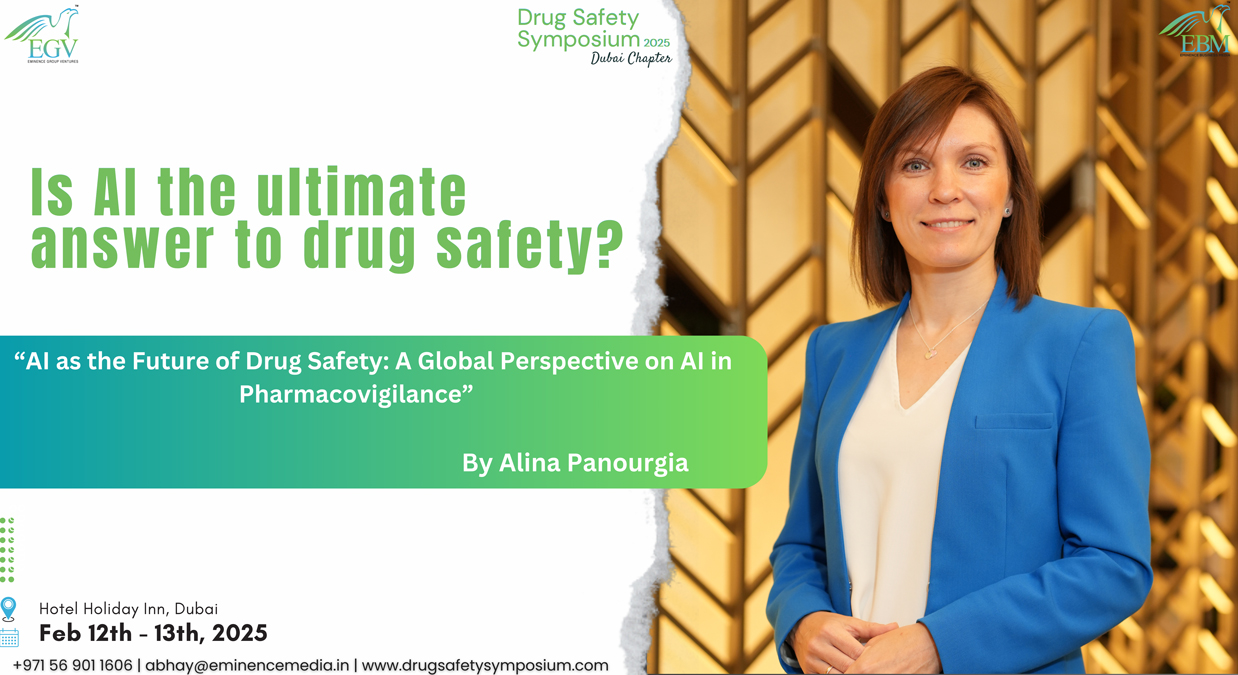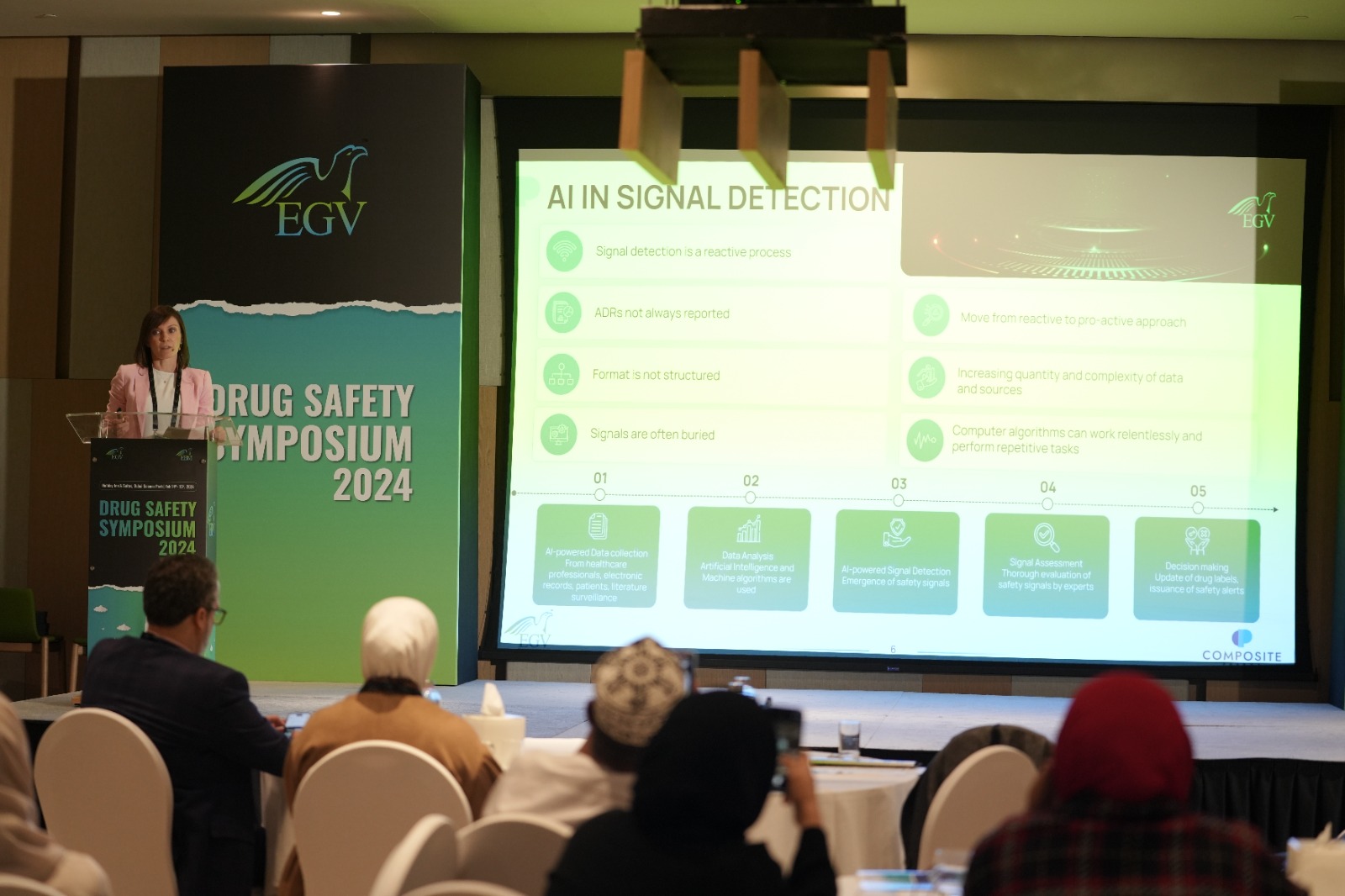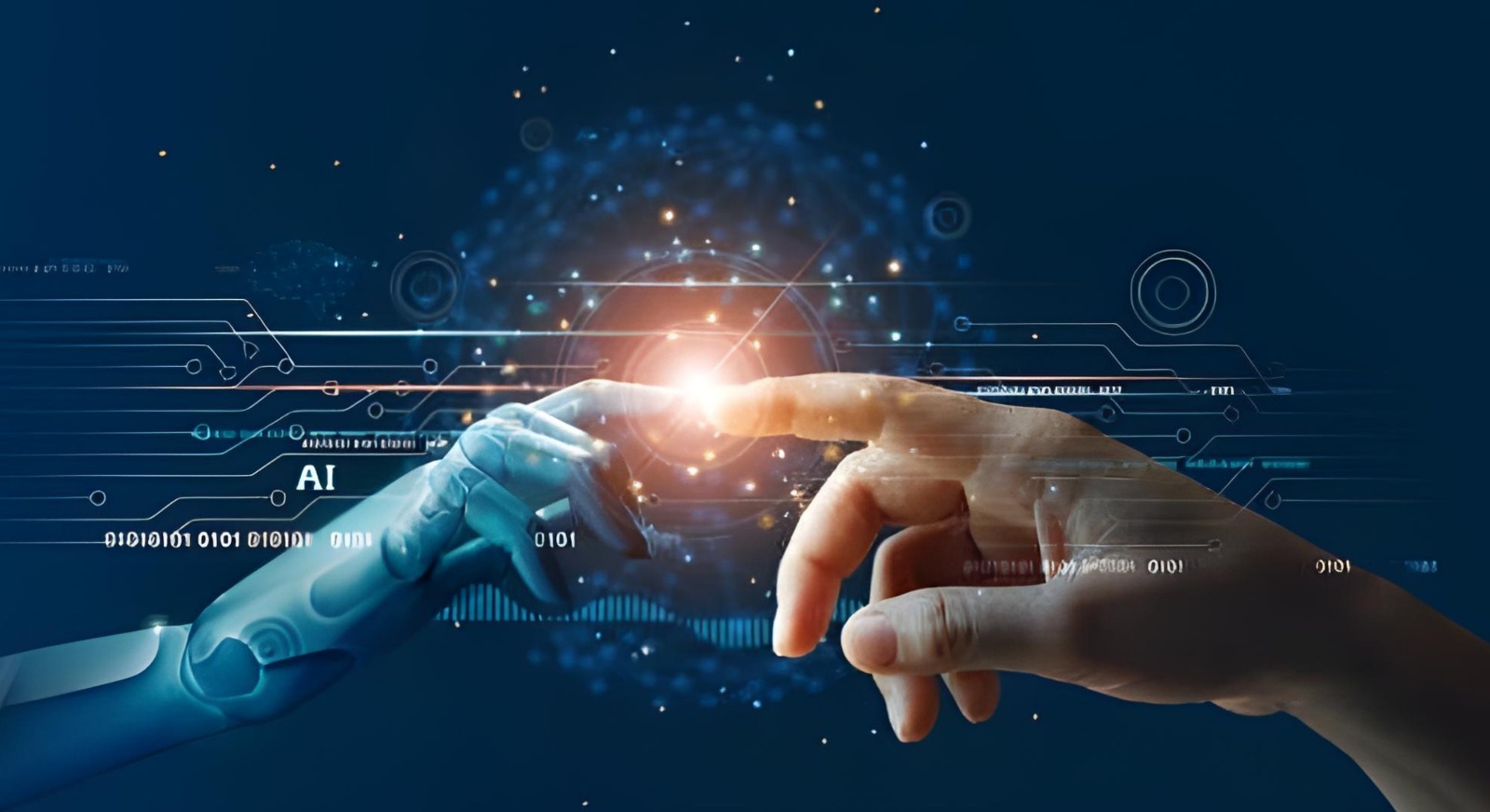
Alina Panourgia
Pharmacovigilance and Regulatory Compliance Advisor
Composite Pharma
Is AI the ultimate answer to drug safety? As pharmacovigilance evolves to keep pace with the pharmaceutical industry, the rise of Artificial Intelligence is transforming how we monitor the safety of medicines. AI offers incredible potential by analysing vast amounts of safety data from health records, patient registries, and social media. But as we embrace these technological advances, it’s crucial to ask: Can AI truly replace human expertise, or is there a need for a balanced approach that values both technology and the human touch?
From Reactive to Proactive: AI’s Role in Pharmacovigilance
Traditionally, pharmacovigilance has been a reactive process, dependent on adverse event reports that often come in late or lack necessary details. AI introduces a proactive approach, using advanced algorithms to sift through massive datasets and identify safety signals much earlier than conventional methods. This shift is revolutionizing how we respond to potential risks, offering a faster, more comprehensive view of drug safety. Studies have shown AI’s ability to predict adverse drug reactions (ADRs) by creating Target-Adverse Event (TAE) profiles and detecting early safety signals, showcasing its potential to foresee issues that might otherwise be missed.

The Human Element in Pharmacovigilance: Balancing Technology with Expert Oversight
While AI’s impact is significant, it’s important to recognize that technology has its limitations. AI models, especially those relying on deep learning, often function as “black boxes,” making their decision-making processes opaque and difficult to interpret. This lack of transparency can be a major drawback when critical safety decisions are on the line. Moreover, AI’s effectiveness heavily depends on the quality of input data—poor data can lead to inaccurate predictions, highlighting the need for human oversight to validate AI findings.
Human experts play an irreplaceable role in contextualizing AI-generated insights, interpreting complex data, and making nuanced decisions that machines simply can’t replicate. For instance, in signal evaluation for advanced therapies or rare diseases, expert judgment is crucial to understand the broader clinical context and determine the appropriate course of action. The collaborative effort between technology and human oversight ensures that safety signals are not just detected but correctly interpreted and acted upon.

When Technology Enhances Human Expertise
There are instances where not only does technology need human oversight, but human expertise also greatly benefits from AI support. In imaging analysis, for example, radiologists have been able to detect abnormalities, such as small nodules or early-stage tumors, with significantly higher accuracy when assisted by AI tools. These AI systems can highlight subtle patterns that may be missed by the human eye, thereby enhancing the overall detection rate. This creates an ethical consideration where healthcare professionals may be seen as obliged to use AI to provide the best possible patient care, as AI’s ability to process and analyze data quickly and accurately can enhance human judgment and reduce the likelihood of oversight. This dynamic underscore the growing expectation that, in certain scenarios, the combination of human expertise and AI technology is not just beneficial—it’s necessary.
Navigating Global Regulations
As AI becomes more integrated into pharmacovigilance, navigating the complex landscape of global regulations is crucial. Regulatory bodies around the world, including the European Medicines Agency (EMA), the U.S. Food and Drug Administration (FDA), and the World Health Organization (WHO), are actively working to establish guidelines that ensure AI is used responsibly in drug safety. These regulations emphasize the importance of transparency, accountability, and human oversight in AI applications, aiming to safeguard patient safety and maintain public trust. The challenge lies in harmonizing these standards across different regions, as varying regulatory requirements can impact how AI is implemented and monitored in pharmacovigilance practices globally. A thorough understanding of these regulatory landscapes and active engagement with global authorities are essential for successfully integrating AI into pharmacovigilance while ensuring compliance and maintaining the highest standards of patient safety.

The Future of Pharmacovigilance: A Collaborative Approach
Looking ahead, the future of pharmacovigilance lies in a collaborative approach that combines AI with human expertise. AI offers transformative potential, but its true value is realized only when paired with human insight, enhancing our ability to monitor and ensure medicine safety while building trust in the systems that protect patients. Embracing this partnership between technology and human oversight will help us navigate the complexities of drug safety with greater confidence, making medicines safer for all.

